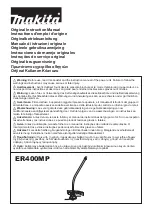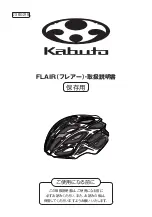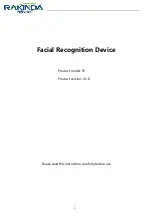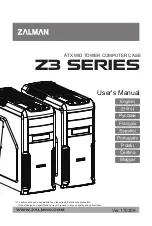
A-14
INSTALLATION
POWER WAVE
®
i400
A-14
General Guidelines for Voltage Sense Leads
Sense leads should be attached as close to the weld
as practical, and out of the weld current path when
possible. In extremely sensitive applications it may be
necessary to route cables that contain the sense
leads away from the electrode and work welding
cables.
Voltage sense leads requirements are based on the
weld process as follows:
TABLE A.2
Process Electrode Voltage
Work Voltage
Sensing (67 lead)
1
Sensing (21 lead)
2
GMAW 67 lead required
21 lead optional
3
GMAW-P 67 lead required
21 lead optional
3
FCAW
67 lead required
21 lead optional
3
GTAW
Voltage sense at studs
Voltage sense at studs
1 The electrode voltage sense lead (67) is automatically enabled
by the weld process, and integral to the to the 14 pin wire feeder
control cable (K1785).
2 The work voltage sense lead (21) is manually enabled, but over-
ridden by constant current weld processes defined for stud sens-
ing.
3 Negative polarity semi-automatic process operation WITHOUT
use of a remote work sense lead (21) requires the Negative
Electrode Polarity attribute to be set. This establishes which out-
put stud the electrode voltage sense lead (67) will be referenced
to.
Electrode Voltage Sensing
The remote ELECTRODE sense lead (67) is built into
the standard wire feeder control cable (K1785) and is
always connected to the wire drive feed plate when a
wire feeder is present. Enabling or disabling electrode
voltage sensing is application specific, and automati-
cally configured by the active weld mode.
The remote ELECTRODE sense lead (67) is also
available in the remote Voltage Sense Connector for
applications that do not use the standard wire feeder
control cable (K1785). This can be easily accessed
with the optional K940 Sense Lead kit.
CABLE INDUCTANCE, AND ITS EFFECTS
ON WELDING
Excessive cable inductance will cause the welding
performance to degrade. There are several factors
that contribute to the overall inductance of the cabling
system including cable size, and loop area. The loop
area is defined by the separation distance between
the electrode and work cables, and the overall welding
loop length. The welding loop length is defined as the
total of length of the electrode cable (A) + work cable
(B) + work path (C) (see Figure A.2). To minimize
inductance always use the appropriate size cables,
and whenever possible, run the electrode and work
cables in close proximity to one another to minimize
the loop area. Since the most significant factor in
cable inductance is the welding loop length, avoid
excessive lengths and do not coil excess cable. For
long work piece lengths, a sliding ground should be
considered to keep the total welding loop length as
short as possible.
REMOTE SENSE LEAD CONNECTIONS
Voltage Sensing Overview
The best arc performance occurs when the POWER
WAVE
®
i400 has accurate data about the arc condi-
tions. Depending upon the process, inductance within
the electrode and work cables can influence the volt-
age apparent at the studs of the welder, and have a
dramatic effect on performance. Remote voltage
sense leads are used to improve the accuracy of the
arc voltage information supplied to the control pc
board. Sense Lead Kits (K940-xx) are available for
this purpose.
If the remote voltage sensing is enabled but the
sense leads are missing, improperly connected, or
if the electrode polarity attribute is improperly
configured extremely high welding outputs may
occur.
-----------------------------------------------------------------------
CAUTION
B
A
C
POWER
WAVE
FIGURE A.2
WORK
















































